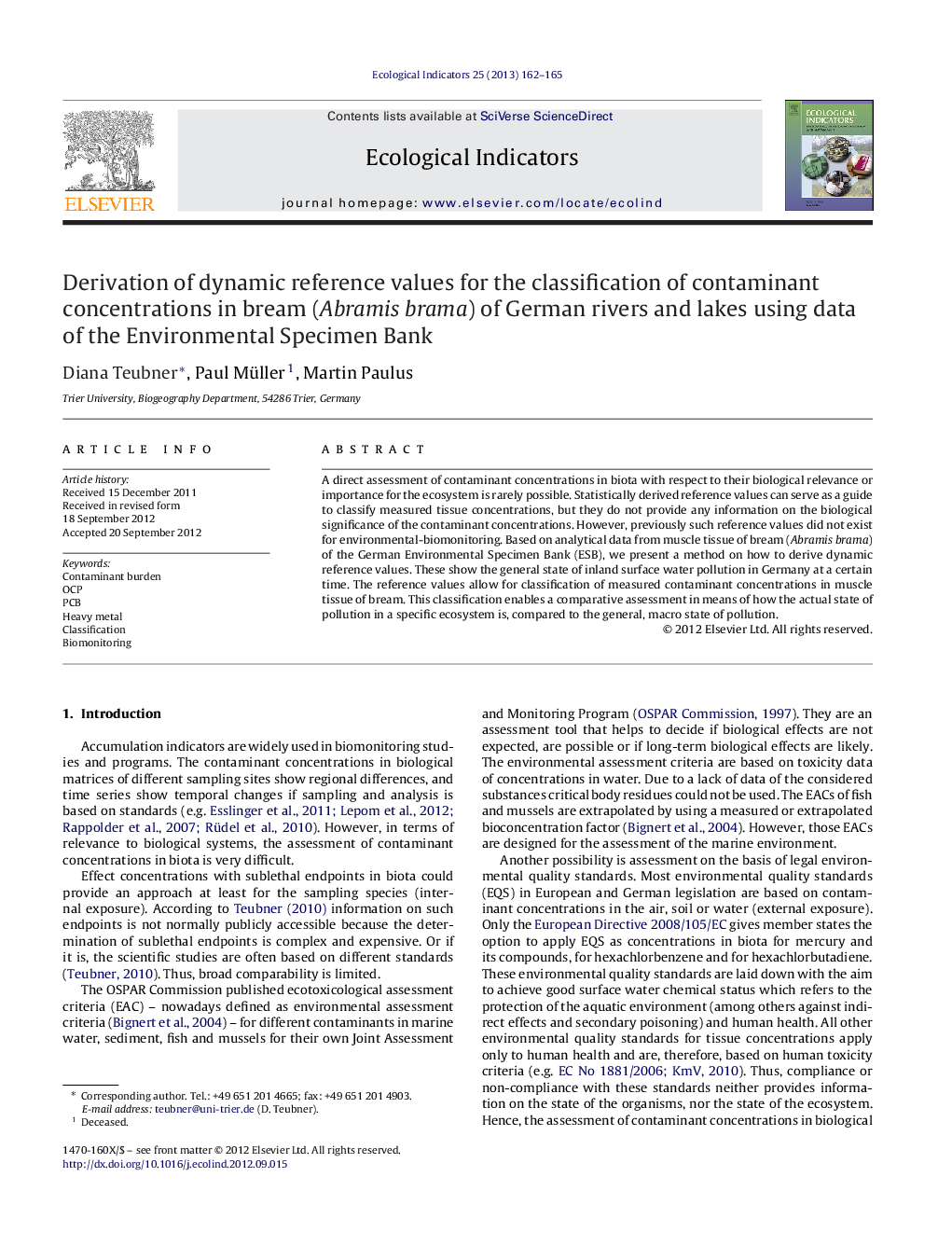| Article ID | Journal | Published Year | Pages | File Type |
|---|---|---|---|---|
| 4373597 | Ecological Indicators | 2013 | 4 Pages |
A direct assessment of contaminant concentrations in biota with respect to their biological relevance or importance for the ecosystem is rarely possible. Statistically derived reference values can serve as a guide to classify measured tissue concentrations, but they do not provide any information on the biological significance of the contaminant concentrations. However, previously such reference values did not exist for environmental-biomonitoring. Based on analytical data from muscle tissue of bream (Abramis brama) of the German Environmental Specimen Bank (ESB), we present a method on how to derive dynamic reference values. These show the general state of inland surface water pollution in Germany at a certain time. The reference values allow for classification of measured contaminant concentrations in muscle tissue of bream. This classification enables a comparative assessment in means of how the actual state of pollution in a specific ecosystem is, compared to the general, macro state of pollution.
► We present a method on the derivation of dynamic reference values (RV) based on contaminant concentration in bream (Abramis brama). ► In a five-class-system four RV define the exceptionally low, low, medium, high and exceptionally high concentration range. ► The RV correspond to a two-year-period and are updated. ► The RV enable a comparative assessment of the actual state of pollution at a specific sampling site with the general, macro state of pollution at a certain time.
